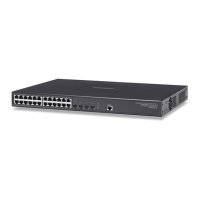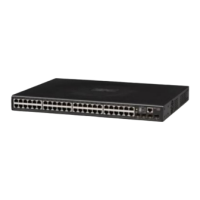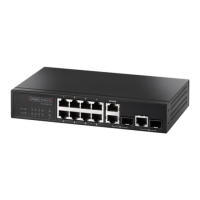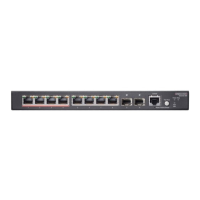C
HAPTER
15
| RSTP Commands
– 261 –
rstp priority This command displays or sets RSTP priority for specified interfaces.
SYNTAX
rstp priority [port-list] [priority]
port-list - A specific port or a range of ports. (Range: 1-28, all for
all ports, or 0 for all link aggregation groups)
priority - The priority for an interface. (Range: 0-240, in steps of
16)
DEFAULT SETTING
128
COMMAND USAGE
This command defines the priority for the use of a port in the Spanning
Tree Algorithm. If the path cost for all ports on a switch are the same, the
port with the highest priority (i.e., lowest value) will be configured as an
active link in the Spanning Tree. This makes a port with higher priority less
likely to be blocked if the Spanning Tree Protocol is detecting network
loops. Where more than one port is assigned the highest priority, the port
with lowest numeric identifier will be enabled.
EXAMPLE
RSTP>priority 19 0
RSTP>
rstp edge This command displays or sets an edge port to enable fast forwarding.
SYNTAX
rstp edge [port-list] [enable | disable]
port-list - A specific port or a range of ports. (Range: 1-28, or all)
enable - Enables interface as an edge port.
disable - Disables interface as an edge port.
DEFAULT SETTING
Enabled
COMMAND USAGE
You can enable this option if an interface is attached to a LAN segment that
is at the end of a bridged LAN or to an end node. Since end nodes cannot
cause forwarding loops, they can pass directly through to the spanning tree
forwarding state. Specifying edge ports provides quicker convergence for
devices such as workstations or servers, retains the current forwarding
database to reduce the amount of frame flooding required to rebuild
address tables during re-configuration events, does not cause the spanning
tree to initiate re-configuration when the interface changes state, and also
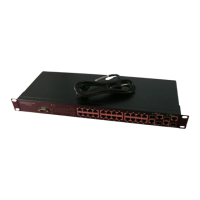
